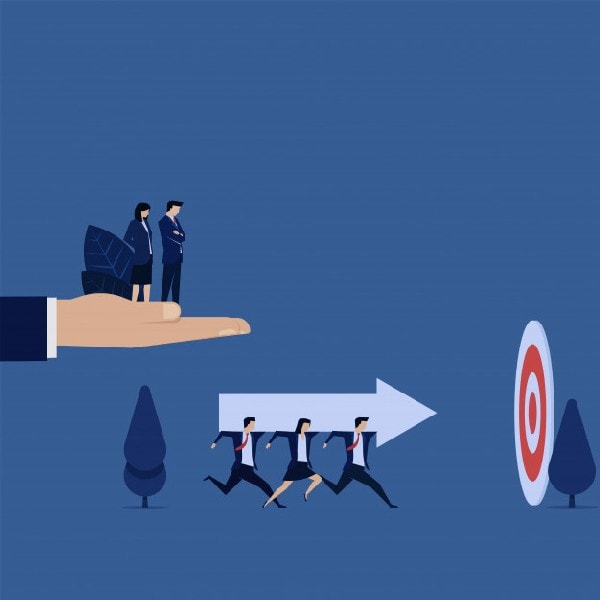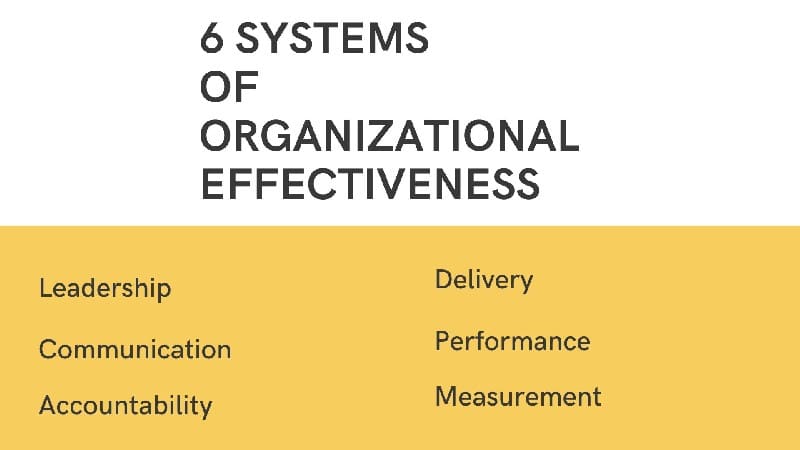Table of Contents
Definition
Organizational effectiveness is defined as a concept to measure the efficiency of an organization in meeting its objectives with the help of given resources without putting undue strain on its employees. It is about how the company can produce the target quota of products, how efficient its process is, and how much waste is produced.
Meaning
It is a fact that performance automatically improves when the leadership system is at its best. The function of leadership includes defining the future, setting direction, becoming organized, creating strategies, implementing them effectively, clarity in directions, clear communication, alignment of goals, developing talent, building accountability, allocating resources and delivering results.
An organization needs to have a clear mission and vision that can deal with the ever-changing industry and side-by-side to meet its goals. Remember it is human resources that prove advantageous, and it should be the priority of a business entity to retain, motivate and develop them to achieve organizational effectiveness.
Approaches to organizational efficiencies

The various approaches to organizational effectiveness are
- Goal approach – The goal approach refers to optimal profit by offering the best service that will lead to high productivity. The limitation of the goal approach is that it is a bit difficult to identify the real goal and not the ideal goal
- System-resource approach – The system resource approach puts its onus on the interdependency of processes that align the organization with its environment. It takes the form of input-output transactions and includes human, economic and physical resources. The limitation of this approach is that acquisition of resources from the environment becomes aligned with the goal of the organization and thus it becomes quite similar to the goal-oriented approach
- Functional approach – The functional approach assumes that the organization has already identified its goals, and now the focus should be upon attainment of these goals and how to serve society. The limitation of this approach is that the organization has the autonomy to take independent action for attaining its goals and so why will it accept serving society as its ultimate goal.
Factors affecting organizational effectiveness
The factors that influence organizational efficiencies are
- Casual variables – These are independent variables that can be altered by the organization and its management, for instance, its policies, skills and behavior and leadership and business strategies. The casual variables can determine the course of development within an organization
- Intervening variables – These are motivation, performance goals, attitude, loyalty and perception of the employees and their capacity for efficient decision-making, communication, and interaction. The intervening variables show the health of an organization.
- End-result variables – These are loss, costs, earnings, and productivity. The end-result variables reflect the achievements of an organization.
Six systems of organizational effectiveness
The six systems set up conditions necessary to create a high-performing organization, It includes
1. Leadership
One of the critical steps in organization effectiveness is developing leadership within the company. It is leaders who create a vision for their company, define, refine and execute critical processes, translate values into strategies, take action and be accountable. A leader has to answer three things
- Value – What is the value he is offering to the customers to gain a competitive advantage in the market
- Approach – How is he fulfilling the unique needs of his stakeholders and which strategy is going to support the vision for achieving competitive advantage
- Alignment – What is the designed alignment of processes, practices, strategy, structure culture, etc and will they be able to create maximum conditions for achieving company vision
2. Communication
Every organization needs an effective communication system so that the flow of information is smooth. Leaders can be successful when they can communicate their message to other people in a precise manner. Everything happens in a company because of the exchange of information, and this is why strategic communication is considered a critical element in the success chain.
It makes sure that the impact of the message is in alignment with the intention so that it will lead to a better and complete understanding. What, where, when, how everything matters hence keep track of your words and communicate effectually. An essential way for organizational effectiveness is by making sure that the leader is aligning with the people around him and teaching regularly.
This transparent communication strategy will keep the focus on a common cause, minimize uncertainty, prevent excuses and give weight to the decisions of the leadership to shape the behavior and belief of the employees
3. Accountability
Organizational effectiveness is to a great extent dependent on the concept of accountability. A company should build an environment where every individual, as well as a group, is accountable for the tasks he participates in.
It is the accountability that determines how effectively the people perform the given functions. The organizations must make sure that there are performance accountability systems in place to clarify the expectations of the company and align the rewards as well as consequences with actual accomplishments.
4. Delivery Efficiency Strategy
The next step in the six systems of organizational effectiveness is the delivery of products and services. It is a fact that consumers and markets are ever-changing, and this means that a company should be prepared to shift and make adjustments to accommodate these changes as well as changes caused by advancements in technology. A straightforward delivery process will ensure the delivery to the right customers and their engagement in full.
This is why business entities try to create simple procedures that are adaptable, responsive. There is no scope for complexity because the onus is on satisfying customer experience. When organizations align initiative and operations with strategy using the best technique, they can pursue breakthroughs in critical areas and build future capability.
5. Performance
Human resources are the most valuable asset of a company, and this is why the proper emphasis is given on hiring and retaining the best of the best. It is essential to find the right fit for the job and develop their skills and know-how through training and other learning methods to increase organizational effectiveness.
Business entities are particular about rewarding knowledge, talent, and expertise to boost employee performances so that they can ultimately have a positive impact on organizational effectiveness.
6. Measurement
It is imperative to measure organizational effectiveness. A business entity must set a standard set of metrics and develop a system of reviews and parameters to analyze and measure tasks, projects, productivity, behavior, processes, and results.
It is leaders who establish and maintain the measurement system to track progress and review status regularly.
Thank you for reading our article about organization leadership and performance effectiveness development.
How can businesses achieve optimal organizational effectiveness?
Quick Statistics: According to a 2023 report by McKinsey & Company, organizations that exhibit high investment in leadership development programs are 2.4 times more likely to hit performance targets. Additionally, these companies reported an average revenue growth rate of 5% higher than their less-invested counterparts, highlighting the clear financial benefits of strong leadership (McKinsey & Company, 2023).
Practical Advice or “Quick Tips”: To enhance organizational communication, it’s crucial for leaders to establish regular touchpoints with their teams. Consider implementing weekly check-ins that encourage open dialogue and feedback. This not only fosters transparency but also aids in aligning individual goals with organizational objectives. Furthermore, adopting collaboration tools such as Slack or Microsoft Teams can facilitate seamless communication across different departments, ensuring everyone remains aligned with the company’s strategic vision.
Liked this post? Check out the complete series on Organizational Management
